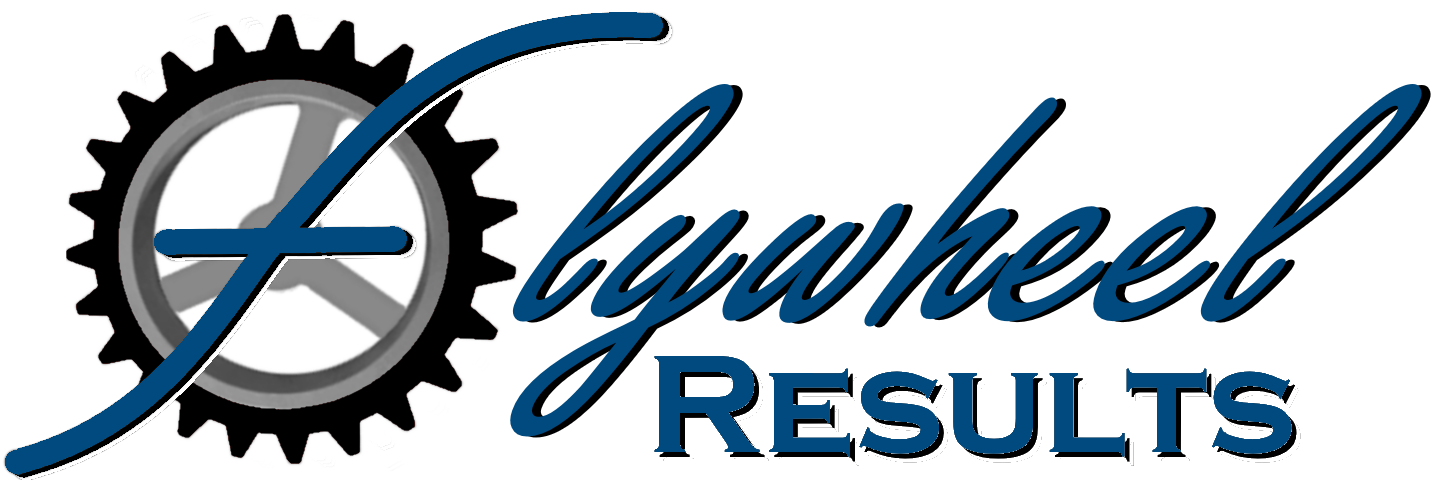Flywheel Thoughts
Latest Posts

"More water!" is not going to help you put out a grease fire
The ultimate measure of a salesperson’s success is revenue. But revenue is a lagging indicator of how well you did in executing the sales process – we can only measure your results after the process is complete. Some sales take months, even years to complete. Businesses cannot afford to just sit around waiting for the results to know whether the process is working. Even with shorter sales cycles, we would like the opportunity to evaluate the likelihood of success before the sale is won or lost, and maybe tip the scale in our favor if given the chance.
So how do we measure the process before it’s complete? How do we determine the likelihood of success? We use leading indicators. Leading indicators let us know how well we are completing the various elements of the sales process while the sale is still in progress, giving us time to course-correct if necessary. Leading indicators include things like the number of dials and/or emails, the number of meetings booked, and the number of demos run help us understand how much potential business we have in the pipeline. Often we call these leading indicators key performance indicators, or KPIs.
As a sales trainer, I have often been approached by sales leaders asking me to work with an individual to provide additional one-on-one coaching. This is one of my favorite things to do! The conversation would go something like this -
Me: “Where do you think he’s struggling?”
Sales Leader: “Well, he’s been hitting 80% of quota consistently. If he could close just one more deal he would hit it. Can you give him more closing training?”
Me: “Sure.”
Fast-forward 90 days. Sometimes closing training made all the difference in the world for the rep; sometimes nothing changed.
Why did it work for some and not others? Were they just not cut out for sales?
Maybe. But more likely it boils down to the fact that we didn’t diagnose the actual underlying problem before determining the best course of action to solve it.
Let’s take the above scenario with three different representatives, all hitting 80% of quota.
Rep 1: Hits 80% of daily email and voicemail KPI goals. They run 80% of the number of demos we would expect in a month. 50% of the demos turn into closed deals and they hit 80% of quota.
Rep 2: Hits 100% of daily KPIs. Runs 100% of expected demos. Closes 40% of them. Hits 80% of quota.
Rep 3: Hits 120% of daily KPIs. Runs 80% of expected demos. Closes 50% of them. Hits 80% of quota.
Under the old way of doing things we would put all 3 reps through closing training. After all, if they each closed just one more deal they would all hit quota.
But what does the data tell us? More closing training is not necessarily going to close more deals.
More closing training is not necessarily going to close more deals
For Rep 1, all the closing training in the world is not going to help the fact that he’s not generating enough demos. The prescription here is, “Just send more emails. And make more phone calls.”
His lack of meeting the daily activity goals indicates he is dealing with either a skill or will problem: Either he doesn’t have the skill to be more productive, in which case time-management training may be called for, or he doesn’t have the will to do so, in which case you can help him polish his resume. (I’m not an advocate of firing as a course of action, except in extreme circumstances, but I believe in helping an under-performing, poorly motivated salesperson to find a role better suited to them – either within your organization or external to it – is a viable course of action.)
For Rep 2, sending more emails is going to increase her pipeline, and that in turn will increase the number of deals she closes. But there are two issues with this approach for her. First, the additional effort is going to exceed the expected return. It’s no small feat to increase productivity 20% and maintain all other activity at the same level. That requires a lot of late nights and early mornings, and it will likely take its toll on other aspects of performance.
Second, and more importantly, the “just do more” approach does not address the underlying problem – her close-rate. Fixing the close rate will be more impactful in two ways:
She will close more deals at her current activity level.
In addition, if she does learn to increase the number of daily activities she will close even more deals. Hello President’s Club!
For Rep 3, like with Rep 1, closing training will not be the most impactful course of action. And “Just send more emails” is not going to help him either. In fact, more activity will only make things worse.
If you apply the wrong solution to the problem you can inadvertently exacerbate the problem, not rectify it. "More water!" is not going to help you put out a grease fire.
"More water!" is not going to help you put out a grease fire
Sending more emails is not going to help him sufficiently meet the goal of moving more prospects to the next step in your sales process if the emails have the wrong message. And how do we know it’s wrong? He is doing 20% more activity than his peers yet he's scheduling 20% fewer demos.
Either his messaging is significantly different from his peers’ or he's targeting the wrong audience - or both! Either way, having even more activity than his current level of 120% is going to burn through even more leads, all with the wrong messaging to the wrong audience. Leads are too precious to burn through!
The best course of action with him is training around messaging and/or targeting the right audience. Pair that with his current activity level and close rate and you have another President's Club contender!
Even though we have three representatives all with the same lagging indicator, 80% of quota attainment, three different courses of action are called for to optimize their performance.
As a sales trainer, it’s great for me to use the data to recognize this and determine the best course of action. But it’s even better when I train the sales leaders to understand how to read the data and come up with the same diagnosis.

